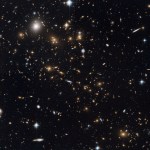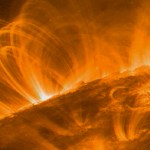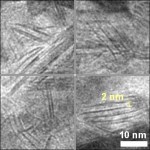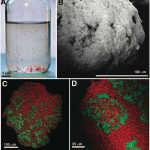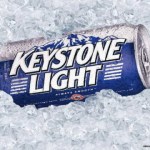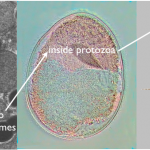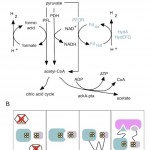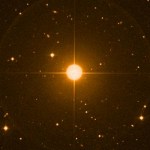hydrogen
"I see a lot of new faces. But, you know the old saying, 'out with the old, in with the nucleus.'" -The Simpsons
Looking around the Universe today, there's no doubt that there's plenty of hydrogen and helium around; after all, it's the nuclear fusion of hydrogen into helium that powers the vast majority of stars illuminating the entire cosmos!
Image credit: ESA/Hubble, NASA and H. Ebeling.
But here on Earth, hydrogen and helium are only a small part of the world we inhabit. By mass, hydrogen and helium combined make up far less than 1% of the Earth, and even if we restrict ourselves…
"The sun is a mass of incandescent gas
A gigantic nuclear furnace
Where hydrogen is built into helium
At a temperature of millions of degrees" -They Might Be Giants
It's so ingrained in us that the Sun is a nuclear furnace powered by hydrogen atoms fusing into heavier elements that it's difficult to remember that, just 100 years ago, we didn't even know what the Sun was made out of!
Image credit: Landscape Photography by Barney Delaney.
The conventional wisdom at the time, believe it or not, was that the Sun was made out of pretty much the same elements that the Earth is! Although that…
With nanotechnology rapidly advancing, the sci-fi dream of a Star Trek replicator becomes increasingly less fantastic. But such radical technology would, in theory, require the kind of subatomic manipulation that far exceeds current capabilities. Scientists lack both the equipment and the fundamental knowledge of quantum mechanics (the Standard Model, for all its elegance, remains incomplete) to build items from the raw stuff of quarks, gluons, and electrons . . . but what about alchemy?
Even Isaac Newton, credited with the dawn of the Age of Reason, felt the mystical draw of alchemy,…
One organism's trash is another organism's treasure. Our cellular wastes, carbon dioxide and water, nourish plants, which with added energy from sunlight produce the oxygen and sugars that we need to survive. At microscopic scales, these cycles of waste and food can get much more complicated, with many species of microbes working together to survive in harsh environments with limited nutrients.
When organisms (like us) digest sugars made of carbon (C), hydrogen (H), and oxygen (O), they split them up into carbon dioxide (CO2), hydrogen ions (H+) and high-energy electrons (e-) that were…
There's a terrific new article in New Scientist about some of the ways scientists are working on turning pee into energy. There's a lot of pee in the world all going to waste, often at huge cost to the environment in terms of energy used to collect and purify waste water. Methods that can produce even small amounts of power from urine could be useful to help power office buildings or farms where there are a lot of people or animals all peeing in the same place, and smaller fuel cells could even also be used to power portable electronics, with no need to carry any fuel or batteries, just a…
Many people in synthetic biology, including myself and much of my lab, are working on using biology to make things more efficiently, renewably, and sustainably. Being able to make plastic replacing biomaterials, chemicals, medicines, and fuels in living cells from renewable resources (especially in photosynthetic organisms that need only sunlight and water) will undoubtedly decrease our dependence on fossil fuels and with a lot of work in policy and process and infrastructure engineering may one day become truly sustainable. It's difficult to not notice, however, how unsustainable most…
My two great thesis project loves are hydrogen and symbiosis, and as such, the recent news of a multicellular organism that lives in a completely oxygen free environment and gets its energy from hydrogenosomes instead of mitochondria is totally fascinating.
Hydrogenosomes are organelles that are evolutionarily related to mitochondria. Mitochondria generate energy for the cell by transferring electrons pulled off of sugars molecules to oxygen (this is why we breathe oxygen). The energy from this electron motion is transferred to the production of ATP, the energy currency of the cell, through…
My paper, "Insulation of a synthetic hydrogen metabolism circuit in bacteria" just came out in the Journal of Biological Engineering! And it's open access!
We designed a metabolic circuit in bacteria that produces hydrogen (a potentially useful fuel) from natural precursors in the cell. The proteins in our synthetic pathway work to make hydrogen by transferring high-energy electrons from pyruvate, a common metabolite, to protons that are freely floating in the watery cytoplasm. The electrons transfer between the proteins through quantum-mechanical tunneling, which makes hydrogenases and…
Riversimple, a small UK-based company, has designed a tiny, relatively cheap, and remarkably open-source hydrogen fuel cell car. The car will not be available for sale, but people will be able to lease it, with the lease agreement including maintenance, fuel, and the eventual recycling of the car. This unique business model allows for the company to manage sustainability for the life of the car. Check out the video below to see the car in action:
Hydrogen, of course is still hard to make, and there aren't many sustainable hydrogen production options. My lab is working on ways to make…
Ahh, stars. Giant furnaces of nuclear fusion. Doing the stuff our Sun does, burning hydrogen fuel into helium (among other things) and emitting lots of visible light and energy in the process.
But when we take a look at brown dwarfs, they aren't like normal (i.e., main sequence) stars like our Sun. Instead of burning hydrogen into helium for their fuel, brown dwarfs don't generate enough pressure to make that happen; they can only burn hydrogen into deuterium.
Let's go over what the differences here are. A hydrogen nucleus is just a proton, with a mass of 938.272 MeV/c2. (I use these units…
What's going to happen to all the stars in the Universe as they get older? Well, just as nothing can live forever, stars can't live forever also. Why? Because they run on fuel: burning hydrogen into helium, for example. When they run out of fuel, something's gotta give. Barbara Ryden reminds us of an excellent and appropriate quote by Dylan Thomas:
Do not go gentle into that good night.
Rage, rage against the dying of the light.
But what exactly happens to the star depends very sensitively on what the mass of the star is.
If you've got a tiny little star, less than about 40% of the mass of…
